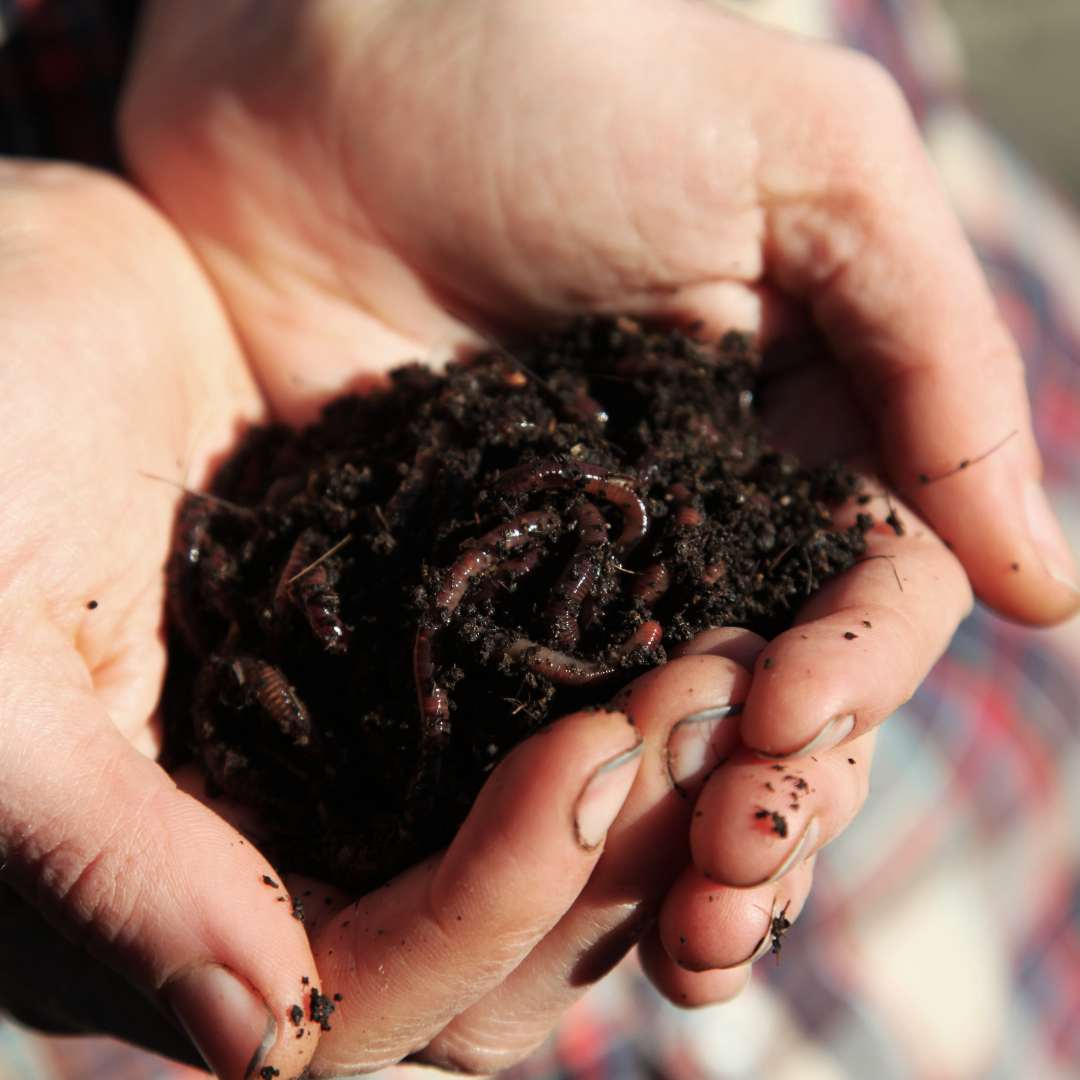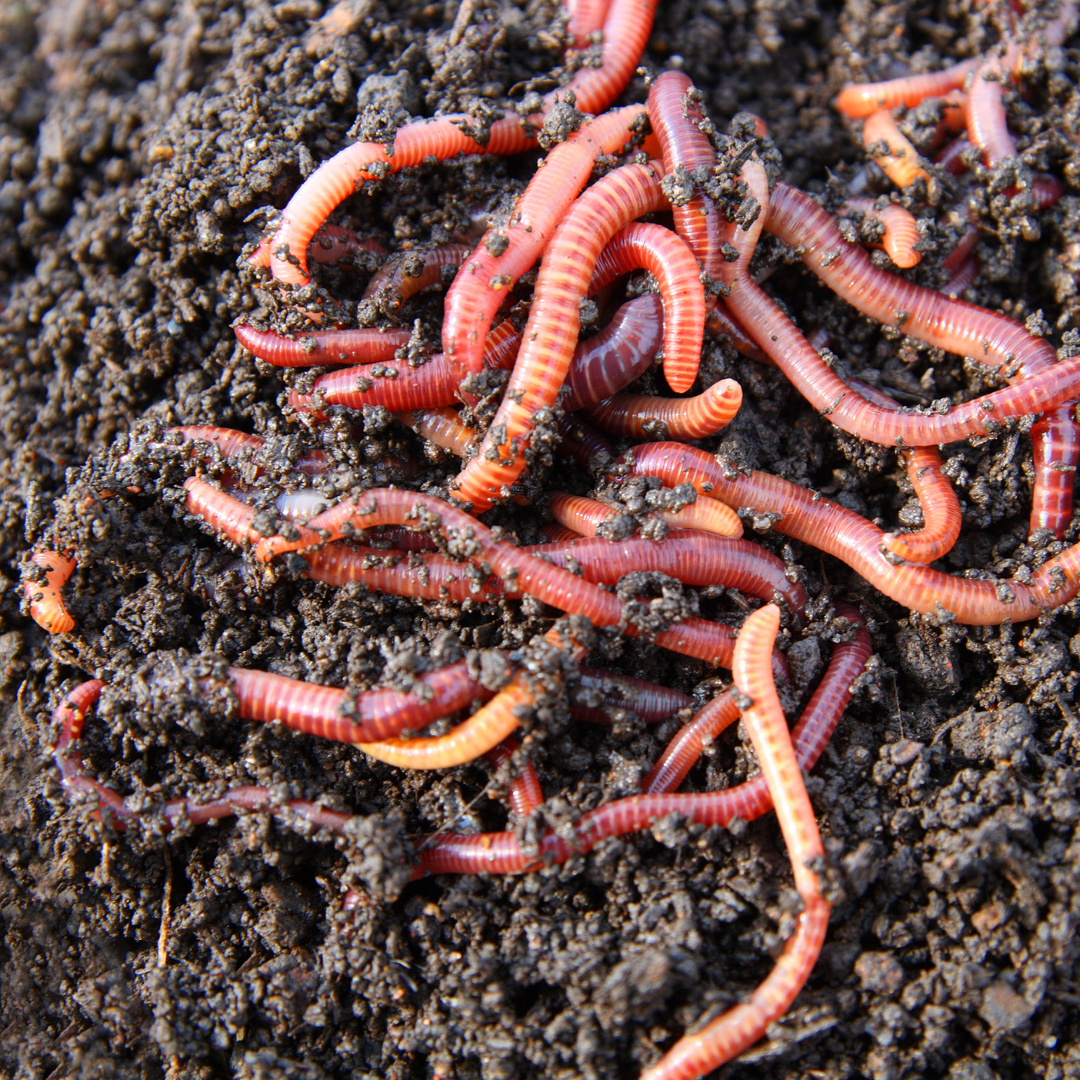Bin Specifics
- Buy a plastic storage bin (with a lid) from a hardware or department store and convert it into a bin for worm composting.
- Drill eight to ten holes (approx. 1 cm or 1/4") in the bottom for drainage. Line the bottom with fine nylon mesh to prevent the worms from escaping. Place the bin on blocks with a tray underneath.
- The container should be shallow (8 - 12" deep), and provide one square foot of surface area for every pound of food waste per week (i.e. six pounds of food waste requires a bin 2' x 3'.)
- Or purchase a commercial one.
| Number of People |
Bin Size |
Quantity of Worms |
| 1 or 2 |
1' x 1.5' x 2' |
1 lb. |
| 2 or 3 |
1' x 2' x 2' |
1 lb. |
| 4 to 6 |
1' x 2' x 3.5' |
2-3 lbs. |
Bedding
Redworms can survive and breed in many kinds of bedding materials.
The important thing to remember is that the red wiggler will eat its own bedding. Materials such as hand-shredded newspaper, composted manure, dampened peat moss, or leaves can all be used. (Make sure to mix peat moss with other bedding as it is too acidic to use alone.) You can also purchase prepared bedding which may be machine-ground paper either alone or mixed with loam.
Dampen the bedding until the moisture level is like a well-wrung sponge. Fill the bin 3/4 full with bedding. Add the worms. Since worms don't like light, they will quickly crawl down into the bedding.
What & How to Feed Your Worms
Worms will eat just about any type of kitchen waste including vegetables and fruits, coffee grinds, tea bags and egg shells. Avoid putting in meats and fats. You can feed your worms every few days, or once a week if you prefer. Simply pull aside some of the bedding, bury the food waste, and cover it with bedding. Each time you feed the worms, choose a different location to bury the food. Note that egg shells will maintain the bedding at a safe pH level. Without them, the bedding may become too acidic. When adding egg shells you should:
- Let the shells dry out,
- Crush them finely with a rolling pin,
- Sprinkle approximately one tablespoon per pound of worms onto your bedding every week.
Worm Environment Requirements
Worms prefer temperatures between 40 and 80 degrees Fahrenheit. If you live in an apartment building they can live quite happily out on the balcony until temperatures drop to 40 degrees. After that they should be taken indoors. If you use an insulated worm bin, however, the bin can remain outdoors year-around. Insulated bins are available commercially, or you can make your own.
How to Harvest Your Compost
After about three months you'll notice that the volume of materials has dropped substantially and the original bedding is no longer recognizable. This means it's time to harvest the finished compost and add fresh bedding.
*Note: Finished compost may become toxic to organisms if it is left inside the bin for an extended period of time. Here are two ways to harvest:
- Move the contents of the bin to one side. Add fresh bedding to the vacant side. Put food scraps into the fresh bedding only, so the worms will move from the finished compost in search of food. After one or two weeks, remove the finished compost.
- Dump the contents of the bin onto a large plastic sheet, and separate into small cone- shaped piles. Place a bright light above the sheet. The worms will move down away from the light. Remove the finished compost from the top of each pile. A small pile of worms will remain at the bottom. Place these into the bin with fresh bedding.
Vermicompost will provide nutrients to your plants and will help the soil hold moisture. It can be used in a number of different ways:
- Sprinkle into a seed row when planting.
- When transplanting, add a handful of soil to the hole you have dug for the plant.
- Use as a top dressing, sprinkling the compost around the base of your plants.
- Mix with potting soil (half and half) for house plants.
Pest Prevention
- When you add food scraps, always bury them under the bedding. Be sure they are well covered with about 3" of bedding material. As an extra measure, you can also put a bit of fresh bedding on top.
- Keep a tight lid on the container you use to store food scraps before adding them to the bin. This will prevent flies from laying eggs in the scraps.
- If a lot of fruit flies fly out of the bin when you lift the lid, you can suck them up with a vacuum cleaner.
- Use a trap. Pour a half-cup of beer into a small glass jar. Place a plastic bag over the mouth of the jar with one corner reaching down into the jar. Poke a small hole in the corner of the bag with a pencil. Secure the bag around the rim with a rubber band. Fruit flies will be attracted by the beer, make their way through the hole, and be unable to get out. (From "Worms Eat My Garbage".)
Odour Prevention
It is unlikely that your worm bin will have an unpleasant odour. If it does, there are a number of possible causes and steps you can take to remedy the problem.
Issue: You have overloaded the bin with too many food scraps. Solution: Give the worms a break and don't add any food scraps for a week or so.
Issue: The bedding is too wet and compacted. Solution: Check the drainage holes to make sure they are not blocked and drill more holes if needed. Gently stir up the entire contents to allow more air in, and add some fresh dry bedding.
Issue: The bin is too acid. Solution: Add very finely crushed egg shells to neutralize the acidity.




